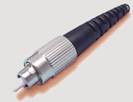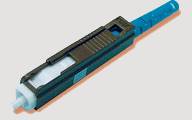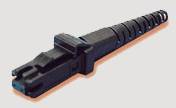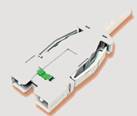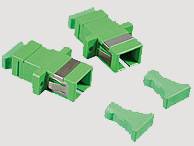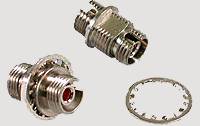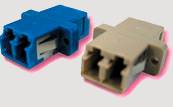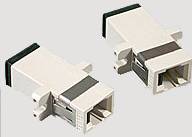![]() Optical Fiber Cabling
Optical Fiber Cabling
![]() General FAQ
General FAQ
Pulling Strength: Some cable is simply laid into cable trays or ditches, therefore pull strength is not too important. But other cable may be pulled thorough 2 km or more of conduit. Even with lots of cable lubricant, pulling tension can be high. Most cables get their strength from an aramid fiber, a unique polymer fiber that is very strong but does not stretch - so pulling on it will not stress the other components in the cable. The simplest simplex cable has pull strength of 100-200 pounds, while outside plant cable may have a specification of over 800 pounds.
Water Protection: Every outdoor cable must be protected from water or moisture. It starts with a moisture resistant jacket, usually PE (polyethylene), and a filling of water-blocking material. The usual way is to flood the cable with a water-blocking gel. It's effective but messy - requiring a gel remover. A newer alternative is dry water blocking using a miracle powder - the stuff developed to absorb moisture in disposable diapers. Check with your cable supplier to see if they offer it.
Fire Code Ratings: Every cable installed indoors must meet fire codes. That means the jacket must be rated for fire resistance, with ratings for general use, riser (a vertical cable feeds flames more than horizontal) and plenum (for installation in air-handling areas. Most indoor cables us PVC (polyvinyl chloride) jacketing for fire retardant.
8.Types of Connectors & Adaptors
There are many types of connectorsand adaptor. Choosing which one to use is usually decided by the type of connector already installed in the equipment to be connected.
When deciding upon the proper cable to use, there are only three issues to consider.
- Is it compatible with my equipment?
- Will I be using it in extremely hazardous conditions?
- Does it require special clearance?
Connectors
SC, ST, & LC Connectors are pre-polished, field installable connectors that eliminate the need for hand polishing in the field .Addison fiber optic connectors provide an immediate termination to either single-mode or multimode fibers.
|
||||||||||||||
|
||||||||||||||
|
||||||||||||||
|
||||||||||||||
|
FDDI Connector |
|||||||||||||
Used for networking applications. Duplex connector with fixed shroud, keyed. |
||||||||||||||
|
|
|||||||||||||
|
SMA Connector |
|||||||||||||
The SMA fiber connector is decreasing in popularity. |
||||||||||||||
|
|
|||||||||||||
|
D4 Connector |
|||||||||||||
Same as SMA Connector, it is decreasing in usage. |
||||||||||||||
|
|
|||||||||||||
Adaptors
Used to mate industry standard connectors, adapters are available with metal and ceramic alignment sleeves, and are color coded for easy identification. It is available in SC, FC, ST, LC, MU, MT-RJ, MTP & Hybrid.
|
|||||||
|
|||||||
|
|||||||
|
|||||||
|
|||||||
